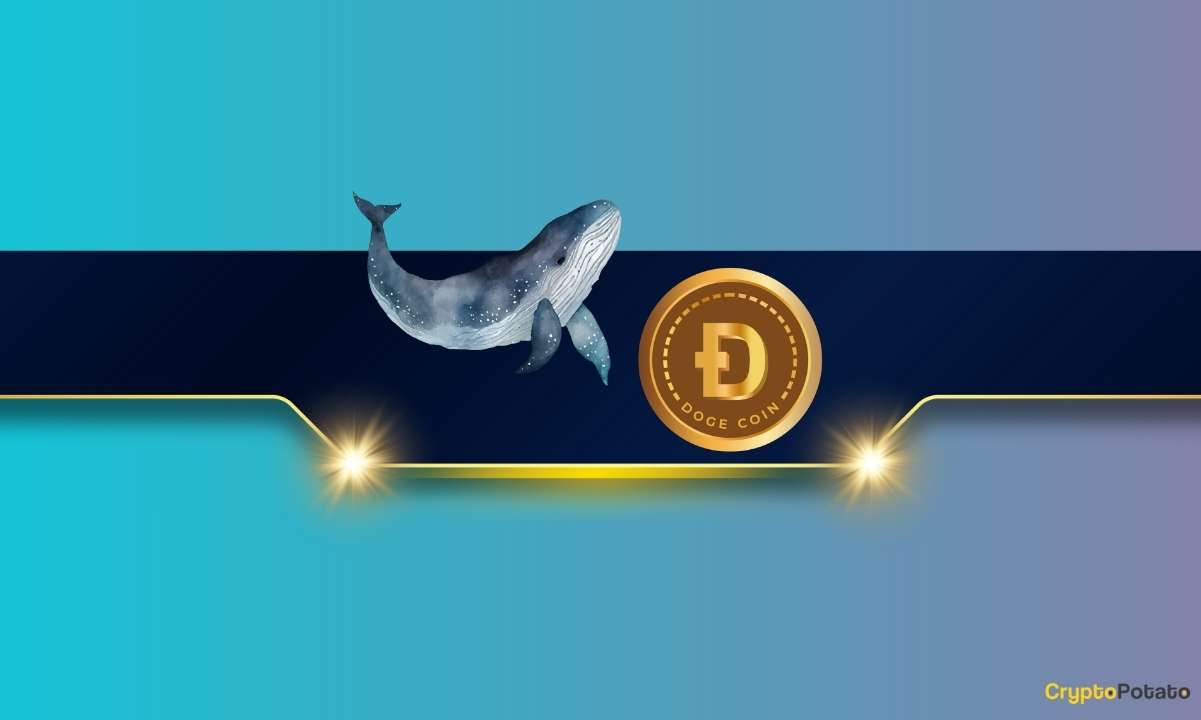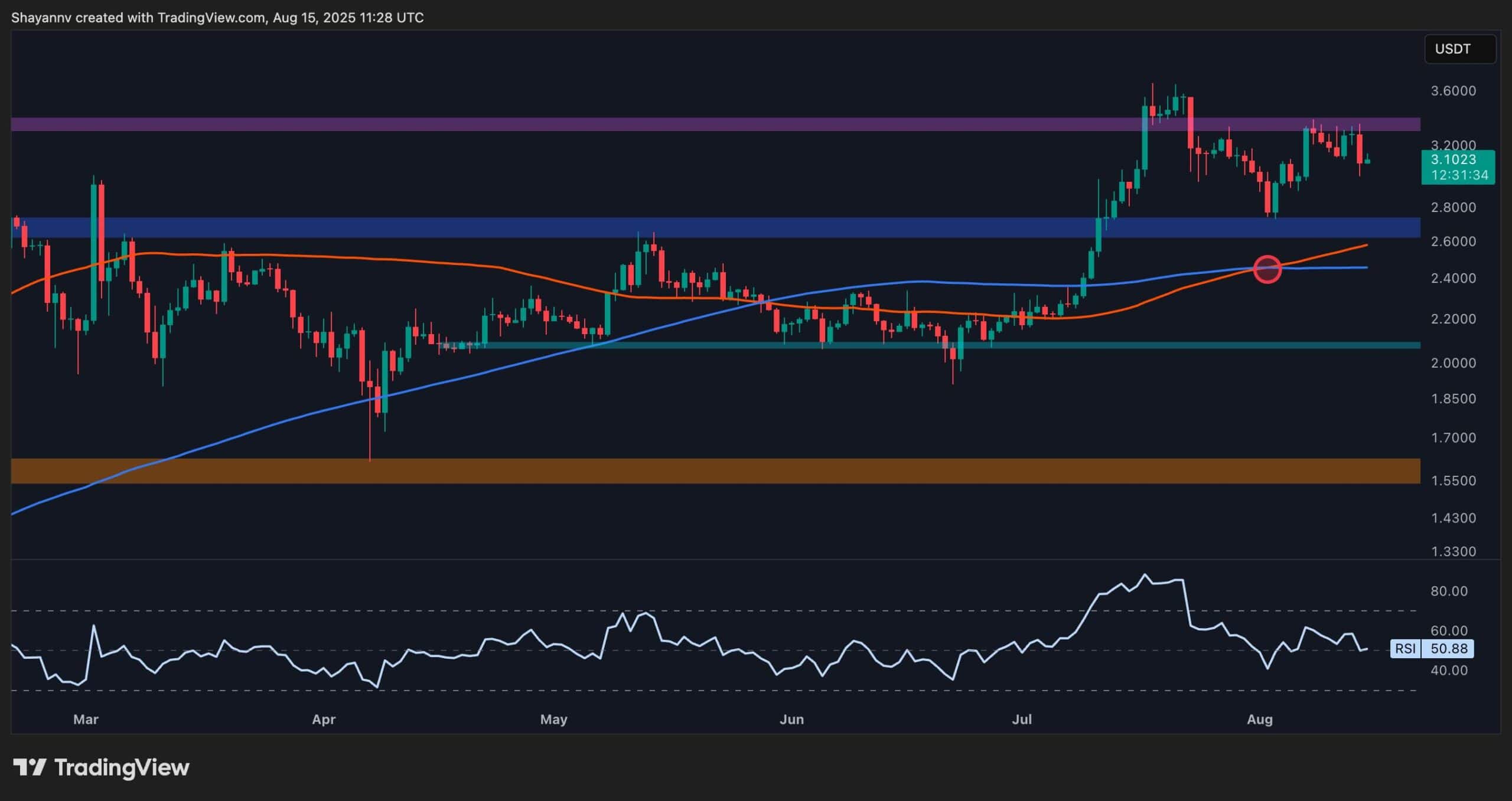Cryptocurrency
Wyoming stablecoin: Are state digital currencies even possible?

In July, the American state of Wyoming shared an open job position for the head of its Stable Token Commission.
The executive will work alongside Wyoming’s governor, state auditor, state treasurer and four expert appointees to bring the state’s very own stablecoin to life.
While Wyoming was the first to pass a law on a state stablecoin, it isn’t the only state considering launching its own digital currency.
In April, a similar initiative was proposed in Texas, where lawmakers introduced bills for creating a state-based digital currency backed by gold.
However, the idea of state stablecoins raises many questions: How would they affect the monetary stability of fiat money and the power of the Federal Reserve? Could they be compatible with a central bank digital currency? Do people really want to return to a system with state banks printing their own monetary notes?
The Wyoming experiment
The Wyoming Stable Token Act was originally introduced in February 2022, in the midst of the crypto market crisis. The bill defines the Wyoming stable token as a virtual currency representative of and redeemable for one U.S. dollar held in trust by the state of Wyoming. Basically, the state would tokenize the federal currency on a 1:1 ratio with deposits.
NEWS–bipartisan group of top #Wyoming legislators proposed a bill for State of Wyoming to issue a #stablecoin, 100% backed by USTreasuries, where the State keeps the float. I see pros & cons (didn’t know it was coming) but❤️that Wyoming continues to explore cool #crypto ideas! https://t.co/BXbELukUQE
— Caitlin Long ⚡️ (@CaitlinLong_) February 17, 2022
Explaining why state lawmakers took such an interest in the digital token project, Chris Rothfuss, the minority leader in the Wyoming State Senate, told Cointelegraph:
“Wyoming needs to be able to transact in a digital currency — to accept payments, to make payments, and to do so without risk. The Wyoming stable token is the solution to that challenge.”
A notable reservation in Section 2 of the Stable Token Act makes the state’s attorney general responsible for monitoring the startup phase of the token’s issuance. Should the attorney general believe it contradicts federal or state law, the project would be frozen.
The bill also sets a deadline for the project: The commission’s director shall provide their report on the doability of the stable token no later than Nov. 1, 2023.
Recent: Privacy prevails and cypherpunks write code at Baltic Honeybadger
Other than that, the document doesn’t specify much; instead, it establishes the Stable Token Commission with the authority to craft further details.
The legislation’s path wasn’t easy. In March 2022, Governor Mark Gordon vetoed the bill, saying he was “unconvinced” that the state’s Treasury was ready to implement the project safely.
Gordon criticized the lack of information and the cost of accounting services, blockchain development and other necessary expenses, and he was skeptical of the project’s purported benefits.
A year later, the governor applauded the effort made by legislators to enhance the document, but voiced new reservations:
“First and foremost, there was no overall plan (a ‘business plan’ for lack of a better term) or, if a plan exists, it did not appear to have been used to guide the legislators in crafting the legislation.”
On March 22, 2023, the Stable Token Act was passed into law without Governor Gordon’s signature. Gordon recognized the state stable token’s potential to “nurture Wyoming’s reputation as a leader in the digital asset world” and deemed the improvements made by the bill’s authors enough to allow it to become law.
The era of multiple stablecoins?
Neither the U.S. Federal Reserve nor any crypto-focused legislators have reacted publicly to the Wyoming project, but it is hard to imagine any kind of affirmative response, given that the American dollar was established precisely to provide a countrywide monetary standard and bring the currency under the purview of the federal government.
So, in principle, any state token project could contradict the logic of central bank currency to a similar degree as private cryptocurrencies.
At the same time, the potential value of Wyoming’s stable token is rigorously tied to the same old American dollar, which makes it less of a separate currency and more of a state-issued financial asset, similar to the state-issued notes for specie of the 19th century.

Rothfuss clarified, “We are not issuing a new currency. The Wyoming stable token is a digital representation of a U.S. dollar held in trust by the state of Wyoming on behalf of the tokenholder. We are not competing with the Federal Reserve — we are enabling a technology.”
Some observers still see a potential conflict between the states and the Fed. “Certainly, there will be a tussle between states and the federal government over the former attempting to issue their own stablecoins,” Brent Xu, CEO of Web3 bond-market platform Umee, told Cointelegraph.
But there could be a compromise in which the Federal Reserve allows states to issue stablecoins under a particular framework, he believes, noting the discussions concerning a national framework for stablecoins.
Zachary Townsend, CEO of Bitcoin-based life insurance provider Meanwhile, doesn’t see any potential problems with state stablecoins, as he believes that the very concept of a stablecoin is open to almost any entity, political or corporate, as the recent example with PayPal’s initiative has shown.
Magazine: Big Questions: What’s with all the crypto deaths?
He told Cointelegraph, “There are going to be tons of private stablecoins. If I just looked at my life and all the companies I have ‘accounts’ or ‘wallets’ or ‘balances’ with, those are going to transform to become stablecoins within a few years.”
This is something Peter Herzog, state policy lead at the Crypto Council for Innovation, can agree with. “There are a variety of models for stablecoins that involve different decisions around underlying collateral, governance and more,” he explained to Cointelegraph. For Herzog, it comes as no surprise that individual states with an active interest in crypto are continuing their experiments with new initiatives:
“Until we see a federal regulatory framework, it is likely that states continue to step in to create rules of the road to promote innovation and protect consumers.”
Cryptocurrency
Ethereum Foundation, Whales, and Hackers: What’s Driving the ETH Sell-Off?

TL;DR
- Whales, hackers, and the Ethereum Foundation wallets moved over $500M in ETH through large sales and withdrawals.
- Ethereum transfers rose to 4.6M ETH, nearing the monthly high of 5.2M recorded in July.
- Staking inflows hit 247,900 ETH, the highest in a month, locking more supply from trading.
Large Withdrawals and Whale Activity
Ethereum (ETH) has seen heavy movement from major wallets over the past few days. On-chain data from Lookonchain shows a newly created wallet pulled 17,591 ETH, worth $81.62 million, from Kraken in just two hours.
Over three days, two new wallets withdrew a combined 71,025 ETH, valued at $330 million, from the exchange.
One of these wallets, address 0x2A92, has withdrawn 53,434 ETH, worth $242.34 million, in two days. This includes a recent purchase of 30,069 ETH, valued at $138.46 million, during a market drop.
Major ETH Holders Offload Millions Amid Price Rally
In contrast, several separate entities have been disposing of some ETH holdings. A wallet tied to a hacker address 0x17E0 sold 4,958 ETH for $22.13 million at $4,463, securing a profit of $9.75 million. Earlier this year, the same address sold 12,282 ETH at $1,932 and later bought back part of the amount at higher prices.
A different whale sold 20,600 ETH for $96.55 million over the past two days, generating a profit of more than $26 million after holding the position for nine months.
Meanwhile, an Ethereum Foundation-linked wallet, 0xF39d, sold 6,194 ETH worth $28.36 million in the last three days at an average price of $4,578.
Recent sales from the same wallet included an additional 1,100 ETH and 1,695 ETH for over $12.7 million combined.
The #EthereumFoundation-linked wallet(0xF39d) sold another 1,300 $ETH($5.87M) at $4,518 ~11 hours ago.
Over the past 3 days, this wallet has sold a total of 6,194 $ETH($28.36M) at an average price of $4,578.https://t.co/4hfCWymHVG pic.twitter.com/ErUyEY8SJy
— Lookonchain (@lookonchain) August 15, 2025
Network Activity on the Rise
CryptoQuant data shows Ethereum’s total tokens transferred have been climbing since August 9. After ranging between 1 million and 3 million ETH through late July and early August, transfers have risen to 4.6 million ETH, approaching the monthly high of 5.2 million recorded in mid-July. This increase has occurred alongside a price rally from about $3,400 to $4,600.
Interestingly, staking inflows generally stayed between 20,000 and 80,000 ETH per day over the past month. On August 14, inflows jumped to 247,900 ETH, the highest in the period.
At the time, ETH was trading near $4,600. Large staking deposits reduce the amount of ETH available for immediate trading, as staked coins are locked for a set period.
In the meantime, ETH trades at $4,647 with a 24-hour volume of $68.25 billion, down 2% on the day but up 19% over the week.
Binance Free $600 (CryptoPotato Exclusive): Use this link to register a new account and receive $600 exclusive welcome offer on Binance (full details).
LIMITED OFFER for CryptoPotato readers at Bybit: Use this link to register and open a $500 FREE position on any coin!
Cryptocurrency
Massive DOGE Whale Activity Hints at $1 Breakout

TL;DR
- Whales bought two billion DOGE this week, lifting their combined holdings to 27.6 billion coins.
- A single 900M DOGE transfer worth $208M to Binance drew attention to large exchange movements.
- DOGE broke key resistance, with momentum building for a possible push toward the $1 price mark.
Price and Market Moves
Dogecoin (DOGE) traded at $0.23 at press time, slipping 4% over the past day but still showing a 2% gain for the week. Daily turnover came in at about $6.18 billion.
Meanwhile, the broader crypto market saw over $1 billion in liquidations. Hotter-than-expected US Producer Price Index data pushed traders to scale back expectations of a near-term Federal Reserve rate cut. DOGE had roughly 290,500 coins liquidated during the sell-off.
On the two-week chart, analyst Trader Tardigrade notes that DOGE has cleared a downward-sloping resistance line after completing what appears to be a “wave V” in an Elliott Wave sequence. Similar setups in the past, where prolonged declines stayed within falling channels before breaking higher, have been followed by sharp rallies.
$Doge/2-week#Dogecoin is gaining strong momentum to surge above $1 pic.twitter.com/TuSEKr19nv
— Trader Tardigrade (@TATrader_Alan) August 15, 2025
Momentum gauges are also turning up. The Stochastic RSI, which had dropped into oversold territory, is now heading higher. Previous reversals from this zone have coincided with sustained upward moves. The current formation points to a possible run that could carry DOGE past the $1 mark.
Heavy Whale Buying and Large Transfers
As reported by CryptoPotato, blockchain data shows large investors have added two billion DOGE in the past week, spending just under $500 million. That brings their holdings to about 27.6 billion coins, or 18% of the supply. The buying streak has prompted speculation within the community.
Recently, Whale Alert flagged a 900 million DOGE transfer worth about $208 million into Binance. The tracking indicates that it originated from a wallet connected to the exchange, likely as an internal activity. The address involved holds 2.88 billion DOGE, one of the largest balances on the network.
Ali Martinez also reports that transactions above $1 million reached a one-month high, with activity building since early August and peaking as DOGE traded at $0.25.
Whales are back! Dogecoin $DOGE activity at a 1-month high. pic.twitter.com/C83Pv68mCt
— Ali (@ali_charts) August 14, 2025
Sentiment Building
Analyst Gordon described the current setup as “a nice bit of consolidation” before a potential breakout, adding,
“This will be one of the first coins normies FLOCK to & the pump will be MASSIVE.”
With whale accumulation rising, high-value transfers increasing, and a bullish technical pattern in play, DOGE is positioned for a potential push toward $1 if momentum holds.
Binance Free $600 (CryptoPotato Exclusive): Use this link to register a new account and receive $600 exclusive welcome offer on Binance (full details).
LIMITED OFFER for CryptoPotato readers at Bybit: Use this link to register and open a $500 FREE position on any coin!
Cryptocurrency
Ripple Price Analysis: XRP at Risk as Key Support Levels Could Trigger Sharp Drop

XRP has recently entered a consolidation phase after a strong rally earlier this summer, with the price action now hovering around key resistance levels on both its USDT and BTC pairs. Yet, while momentum has slowed, the charts still indicate a generally bullish structure, with multiple key support levels remaining firmly in place.
Technical Analysis
By ShayanMarkets
The USDT Pair
On the XRP/USDT daily chart, the price is currently trading near the $3.10 mark, facing a strong resistance zone around $3.40. This follows a breakout above the $2.70 range in July, which has now flipped into a support area.
Both the 100-day and 200-day moving averages are also trending upward and recently formed a bullish crossover around $2.45, reinforcing the medium-term bullish sentiment. If the $3.40 resistance breaks, a push toward the critical $4.00 range becomes likely.
However, the RSI hovering near the neutral 50 level suggests a lack of strong momentum for now, meaning a short-term pullback into the $2.80 support zone is still possible.
This zone will be key for maintaining the bullish structure. Losing it could open the door for a deeper correction toward the 200-day moving average located around the $2.40 mark. Yet, as long as the price stays above the moving averages, the broader trend remains bullish.
The BTC Pair
Looking at the XRP/BTC chart, the pair has recently pulled back after hitting the 3,000 SAT resistance, with the price currently around 2,600 SAT.
This follows a clean breakout above the long-term descending channel and a successful retest of its upper boundary, which coincided with the 200-day moving average and the 2,400 SAT support zone. This confluence remains a key bullish technical factor, as holding above it could attract renewed buying pressure.
That said, RSI levels around 48 show that momentum has cooled after the sharp July rally, meaning XRP may continue ranging between 2,400 SAT and 3,000 SAT in the near term. A decisive close above 3,000 SAT would likely open the path to the 3,400 SAT zone, while losing 2,400 SAT could shift the bias back toward 2,000 SAT support. For now, the structure still favors the bulls as long as higher lows remain intact.
Binance Free $600 (CryptoPotato Exclusive): Use this link to register a new account and receive $600 exclusive welcome offer on Binance (full details).
LIMITED OFFER for CryptoPotato readers at Bybit: Use this link to register and open a $500 FREE position on any coin!
Disclaimer: Information found on CryptoPotato is those of writers quoted. It does not represent the opinions of CryptoPotato on whether to buy, sell, or hold any investments. You are advised to conduct your own research before making any investment decisions. Use provided information at your own risk. See Disclaimer for more information.
Cryptocurrency charts by TradingView.

 Forex3 years ago
Forex3 years agoForex Today: the dollar is gaining strength amid gloomy sentiment at the start of the Fed’s week

 Forex3 years ago
Forex3 years agoUnbiased review of Pocket Option broker

 Forex3 years ago
Forex3 years agoDollar to pound sterling exchange rate today: Pound plummeted to its lowest since 1985

 Forex3 years ago
Forex3 years agoHow is the Australian dollar doing today?

 Cryptocurrency3 years ago
Cryptocurrency3 years agoWhat happened in the crypto market – current events today

 World3 years ago
World3 years agoWhy are modern video games an art form?

 Commodities3 years ago
Commodities3 years agoCopper continues to fall in price on expectations of lower demand in China

 Economy3 years ago
Economy3 years agoCrude oil tankers double in price due to EU anti-Russian sanctions

























